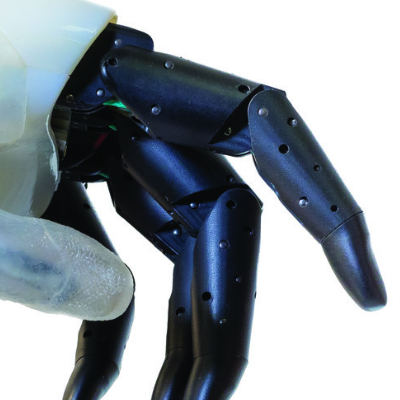
Anthropomorphic prosthetic finger with actuation and elastic return by cable with adjustable pre-tensioning. Possibility of under-implementation with preservation of the adaptability and differentiality of closure.
Anthropomorphic prosthetic finger with actuation and elastic return by cable with adjustable pre-tensioning. Possibility of under-implementation with preservation of the adaptability and differentiality of closure.


Patent Status
PENDING

Priority Number
IT201800003961A

Priority Date
09/05/2018

License
INTERNATIONAL
Problem
The problem consists in the creation of prosthetic fingers capable of generating a grip of objects as natural as possible and close to the behavior of human fingers. The main need is therefore that of designing a finger adaptable to the object with which it comes into contact, and characterized by a certain number of degrees of freedom, which guarantees a wide range of movement both in the implemented phases and in those of passive movement. A further problem is the possibility to easily choose and vary the trajectories and closing sequences of the finger, in order to choose how the finger will close and with what grasping speed / grasping. Another problem is the reliability of the finger system, able to withstand the opening and closing cycles for the entire life of the device in the hands of the user.
Additional but necessary features are the overall robustness of parts and mechanism, lightness and the possibility of aesthetic customization of the parts.
The existing under-implemented prosthetic fingers, currently on the market, involve the use of mechanisms constructed by means of rigid rods hinged together, incorporated into the body of the phalanges. With the use of this type of mechanism, both the flexion of the phalanges and the extension of the same are implemented by means of leverage. This is positive for the duration of the mechanism but limits the adaptability of the device when gripping objects (highly disabling feature).
Current Technology Limits
Our Technology and Solution
Prosthetic finger for an upper limb prosthesis solution in which at least one hand and / or partial hand prosthesis is provided.
Prosthetic finger with an anthropomorphic shape, designed with two transmission cables: the first to operate and close the finger, and the second to allow its extension, once the drive cable stops to apply its torque to the two joints. The first cable can be connected to an electric motor, placed inside a prosthetic hand, while the second cable is connected to an internal elastic component, such as a spring. This type of actuation allows the adaptive movement of the two joints, and consequently of the entire finger.
Advantages
TRL
Team






